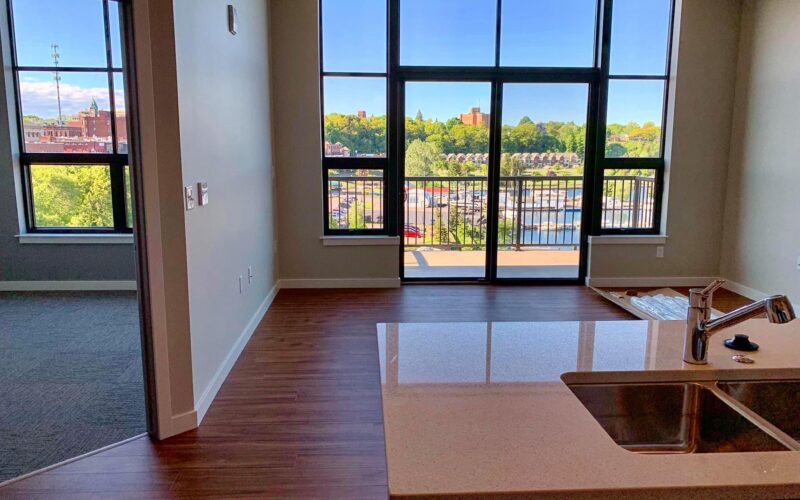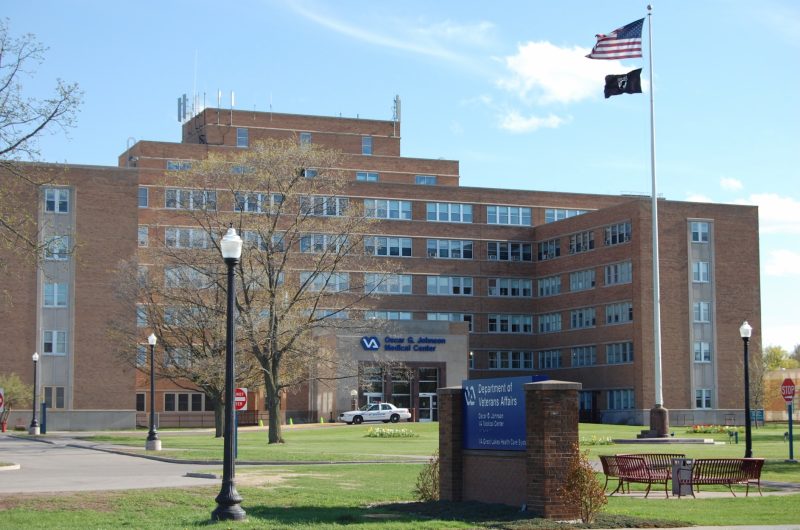Affordable Housing in Marquette
The opinions expressed in this publication are those of the authors, and do not necessarily reflect the opinions or views of Rural Insights or its members.

Somebody recently asked for my thoughts on affordable housing in the City of Marquette, and in particular, the impact of current rates on renters and the service economy.
I have long been an advocate for affordable housing (since the late 1970s, when my mother was appointed to the Housing Commission), and more recently, I have been pulled into the discussion as a result of the booming “sellers” housing market currently underway.
It’s a complicated issue–I suspect it will take a couple of thought pieces to cover the full scope–so I usually try to answer by laying out a little perspective. I can offer an over-50-year personal perspective on what life in Marquette has looked like, and trends which are probably having an impact on “affordability.”
First, the data that informs my views comes from a variety of open sources to the public. The U.S. Census American Community Survey; the Bureau of Labor Statistics; the City of Marquette Property Tax data; the Bureau of Industry Statistics; and Polk City Data (to name a few), as well as contemporary media reporting; research works by the Federal Reserve; and a host of other reading and discussion I maintain simply out of personal interest. Old habits die hard!
I share this to ensure that readers can conduct their own research, and inform their own views–this isn’t a scientific treatise. 🙂
So, on to the basics of affordability. Housing market economics are pretty straightforward. In a perfectly competitive market, the demand side of the market looks like there are many buyers and many sellers, all of whom are small relative to the market, and all the goods are perfectly fungible–i.e., of similar quality and cost, etc.
On the supply side, as price increases, more firms jump into the market, and as rent increases, property owners and developers make more units available. Demand for housing drops when any number of things happen–personal income constraints, higher interest rates, bad economy, etc. And for supply, the same type of impacts, e.g., construction or financing costs increase, increased regulatory risks, etc.
There are no perfectly competitive housing markets in the U.S., and Marquette is no exception. There are supply constraints on the amount of available acreage available for development. Cities seek opportunities for development that maximize the opportunity to levy property taxes, and it should come as no surprise that almost one third of the total acreage of the City generates NO property tax whatsoever!
As an example, Northern Michigan University owns approximately 27.5% of the property in the City, and as a State entity, pays no property taxes or Payment in Lieu (PILT)–and the property isn’t available for private sector development.
For the remaining 60-70% of City property, tough policy decisions need to be made to create balance between housing demands and all other economic and governmental uses (e.g., schools, hospitals, retail, manufacturing, etc.).
Local control has shifted over the last 50 years from a real estate market that was largely controlled by Marquette citizens to one which is now far more dependent upon national and out-of-area decisions and policies.
Of the top 100 taxpayers in the City of Marquette, almost 20% are property managers/developers, and of those, almost half represent non-Marquette investors or corporations.
Decisions about housing in Marquette are now being made in places such as Colorado, Florida, Ypsilanti and New York–and are governed by Real Estate Investment Trusts (REITs), Federal Housing Rules, and a host of other criteria beyond local policies.
There is considerable risk associated with the concentration of market power in some segments of the local housing market. As an example, 22% of the Marquette rental market is controlled by only 3-5 entities. Ten percent of this segment is owned and operated directly by the City and one non-profit association.
To be a little more specific, of the approximately 4,500 rental units available in the City, about 981 are controlled by the City, or 3-5 people. Along with all the other supply constraints, this has the potential to deter further competition, as well as influence local market rates.
On the demand side, Marquette is dominated by rental real estate. Of the approximately 8,900 housing units in the City, only 48%, or 4,300, are owner occupied. As an example, by the numbers, NMU reports that almost 4,200 students live off campus–no doubt contributing significantly to the demand side.
Median rental rates for a one-bedroom apartment are $900 per month; for a two-bedroom, $1,200 per month; and for a three-bedroom, $1,800 per month. Seventy percent of Marquette’s job market serves in administrative, retail sales, or food service and entertainment functions, with median incomes between $24,000 – $34,000 per annum, or net pay of approximately $1,600-$2,300 per month.
If the definition of affordable housing–either for rent, or to own–is recommended to be no more than 30% of net monthly income, even the cheapest rental units are almost double that–e.g., a single bedroom apartment for $900 would represent 56% of monthly wages for a food-service worker. When consolidated with food, transportation, utility costs, etc., the impact of rental rates is even more pronounced.
For the affordable/low-income segment, the challenge is equally pronounced. Approximately 5,100 people live at or below the poverty level in Marquette. The number of impoverished residents is disproportionately female with children who live at home.
The number of City-owned and operated low income housing units available is 254 (Pine Ridge and Lake Superior Village), and Snowberry contributes another 188. As a result, over 4,000 residents are seeking housing through a wide variety of alternative means, and no doubt, meeting their other living requirements through a wide variety of public and private assistance.
I understand why people believe affordable housing in Marquette is a problem.
That said, I remember growing up in Marquette when the challenges were a little different. NMU hadn’t expanded westward yet. The area where the dormitories, Jamrich Hall, the LRC, and the rest of the buildings are now was merely a big empty field across the street, where the neighborhood kids and I used to go fishing in the Pond, and ride snow-mobiles in a big circle from Fair St. to Wright St. and back.
Fair Street was still partially unpaved gravel between Whitman School and Eight St., which punched all the way through to what is now Sugarloaf Ave. Manufacturing and heavy industry dominated the town in areas that are now high-end residential development. There were three hospitals in operation; two high schools, and two Junior Highs.
Most of the jobs were in manufacturing, natural resources, retail services, and government or education sectors, and most families were single-income, with decent paying jobs. The gap between haves/have nots was much smaller than it is today–most families shopped at the same places, ate at the same restaurants, and recreated together. Churches, charities, and unions provided for their constituents, and were generous organizations. Was it any more or less affordable than today?
Perhaps the more relevant question is, “What current alternatives exist to address the issue of affordable housing in Marquette?” Perhaps a few more thought pieces on this in the future.






Love all the information. Interesting insights. What’s surprising is the 27.5% of the city property being owned by NMU. Is that accurate? More than a quarter of the city? The campus is large but doesn’t seem that large. Does NMU own city property away from the campus?
Interesting for sure. I hope he will cover the demographic changes in one of his up coming pieces.
A very informative article, Thanks
Thanks for the informative piece, Bill.
Now that question is how can this be addressed?
Different story if median income doubled for those making less than 24,000-36,000 as in your example and if the owners of rental properties and the cost of housing didn’t increase.
Wage inequities for the working poor working needs to be addressed for housing affordability to occur
Great info! I cannot believe rents are that high!
I hope they don’t build any more around the lake.
From a retirees point of view- My rent has gone up 25 percent in the last two years. I’m on a fixed income. They just added water to our utilities which was included before plus $35 a month. I’m not sure if sewage and garbage since I haven’t seen the new lease which I start in March. The manager called about upcoming changes. They also told us we have to increase our rental insurance to $500,000 which I’m sure will cost me more. They have not done any improvements inside the units . Another thing that bothers me is no one will tell us who owns the units. It was sold last summer. We just know who the manager is and Everything is done online.. It has gone from $1850 plus electric and gas to 2135 plus electric gas and water which iadds up to about 2300 in 2 1/2 years I like where I live but I’m afraid I won’t be able to afford it in a few years at this rate. Just worried about renting prospects in the future
By far the most insightful article on the economics of Marquette I have read since moving here 3.5 years ago, really hope you follow up with more.
I hope further articles are forthcoming – its interesting to see if from Mr. Vajda’s historical perspective.
Great article!
Affordable housing in Marquette? its called Ishpeming, Negaunee, etc. With the proximity and a bus service there is no need for what will end up being subsidized housing in the area. A great town that I attended college in is growing and that means some people are not able to grow with it and some are. A fact of life in the area I currently reside (Boston area) and much of America. However there is nothing inexpensive outside Boston like Marquette.
This would be a great time to institute a high property tax rate for homes owned by out of state residents. If wealthy people and investment firms want to buy up a limited supply of homes, we can at least charge them double or triple what a Yooper has to pay.